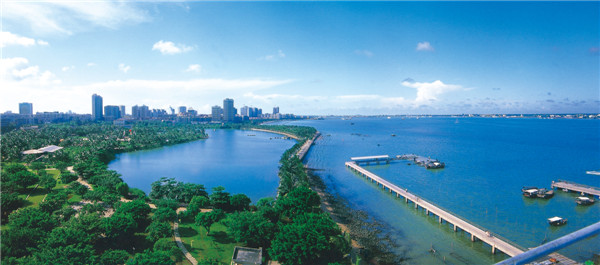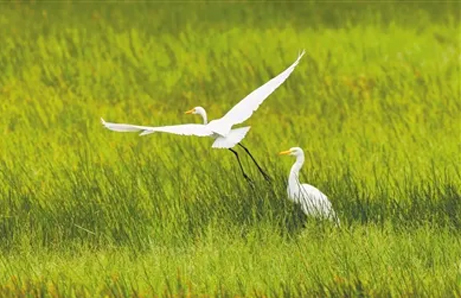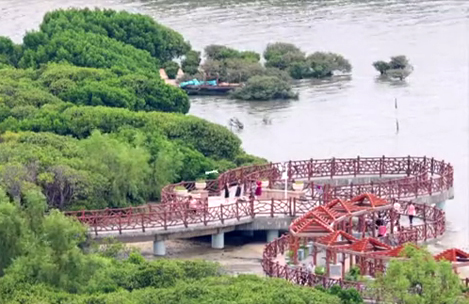Home> Green City
Vegetation and biological resources
Leizhou Peninsula sits in the north tropics and faces a tropical ocean. It is in the grip of the monsoon climate and has natural tropical evergreen monsoon forests. Common trees include ivy tree bark, Albizia kalkora, camphor, banyan, Canarium album, Artiaris toxicaria and wild litchi.
Leizhou mainly cultivates sugarcane, rubber, black pepper, coffee, eucalyptus, mango, longan, lychee, jackfruit, carambola, coconut, areca nut, banana, pawpaw, cassava, balsamroot and sisal hemp.

There are 15 mangrove forests at the seabeaches and marshlands in Leizhou, which is a major mangrove forest distribution area in China.
There are a total of 194 kinds of birds, including 25 types under key State protection and 34 under Guangdong’s protection. In addition, there are abundant fish, shellfish, shrimps and crabs. Sika and red deer, both under first-grade national protection, and tiger frog, under second-grade State protection, are also bred in Leizhou.
Zhanjiang actively develops wildlife resources and focuses on natural resources and environmental protection. It is building nine coastal nature protection areas, including the mangrove forest protection zone, which is one of the four largest in China, covering an area of 20,000 hectares. In 2002, the mangrove forest protection zone made the Ramsar Convention directory. The city is also home to the Sanlingshan National Forest Park, Lianjiang city’s Xiexie Mountain, and the Genzhuzhang Nature Protection Zone. The city has increased forest coverage and improved ecological environment through afforestation.

 Print
Print Mail
Mail 5G construction supports Zhanjiang's high-quality development
5G construction supports Zhanjiang's high-quality development
 Acting mayor inspects project construction in Xuwen, Leizhou
Acting mayor inspects project construction in Xuwen, Leizhou Zhanjiang island an "egret paradise"
Zhanjiang island an "egret paradise"  Dancing egrets add vitality to Xiashan
Dancing egrets add vitality to Xiashan